Like most mothers, Heidi Ingram’s life often wasn’t her own. Getting kids where they needed to be, managing the home and working as a writer didn’t leave much room for personal interests.
But at one point, her mum gave her an embroidery kit during an especially busy time. Heidi managed to find some time to start stitching, and she immediately enjoyed the tactile elements and how it made her slow down and relax. She was hooked.
Heidi continued stitching commercially available designs, but she eventually became frustrated. She wanted to create art with more personal meaning and expression. But how?
One day, Heidi looked out of her kitchen window and decided to stitch what she saw. Through her eyes, the sketch was simplistic, but the tiny, embroidered vignette was enough to encourage her to continue.
She grabbed her camera and ventured out to snap photos of the surrounding scenic coastline and rural landscapes of East Lothian, Scotland. Those photos were then translated into vivid and textural stitched landscapes.
Not only were friends and family enamoured with Heidi’s new work, but she also received an invitation to exhibit at a local art show in 2018. Her confidence as a textile artist soared.
That same year, she landed a new writing gig for TextileArtist.org, and she hasn’t looked back since. Heidi’s artistic and professional worlds had perfectly collided, and she’s now offering you a glimpse into both beloved ventures.
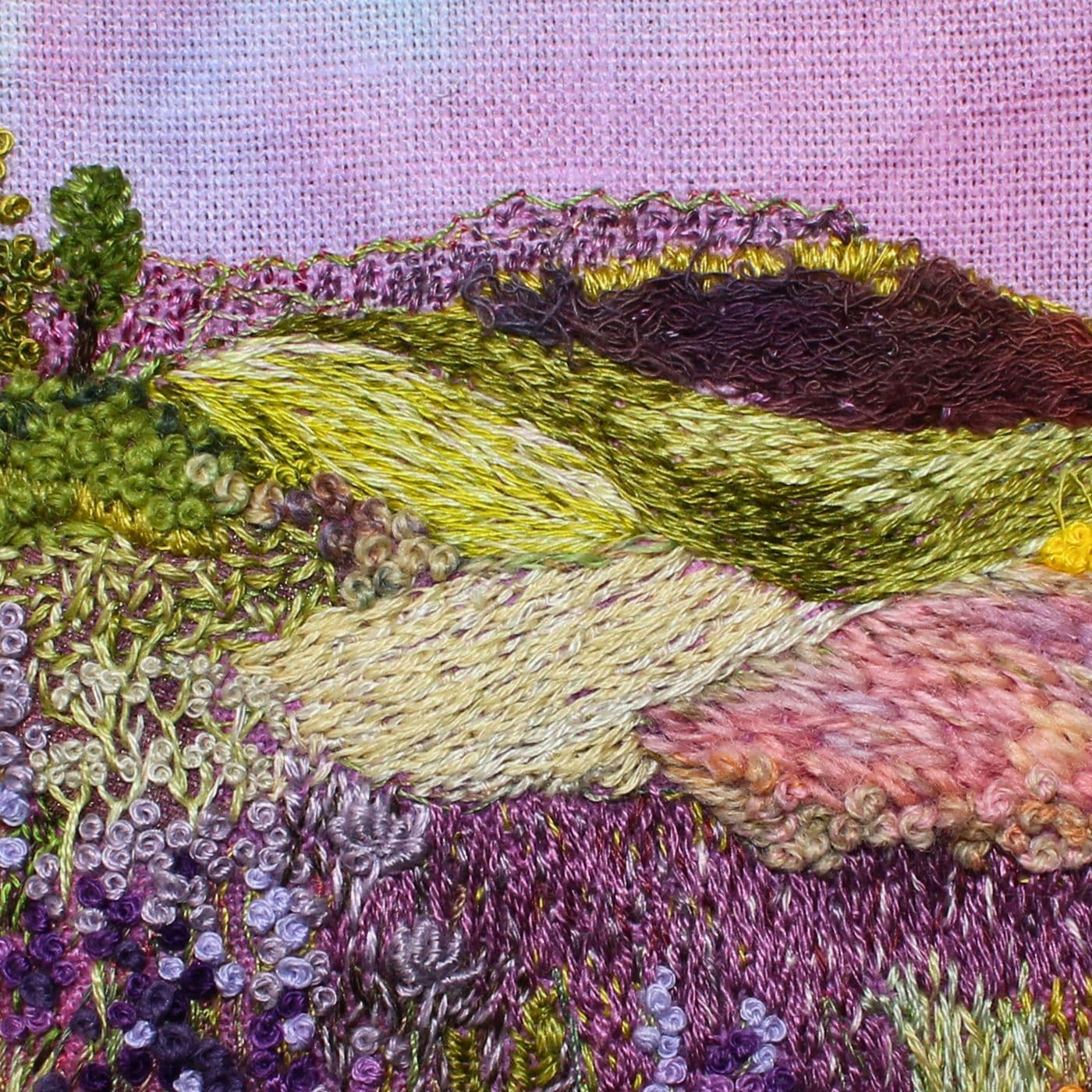
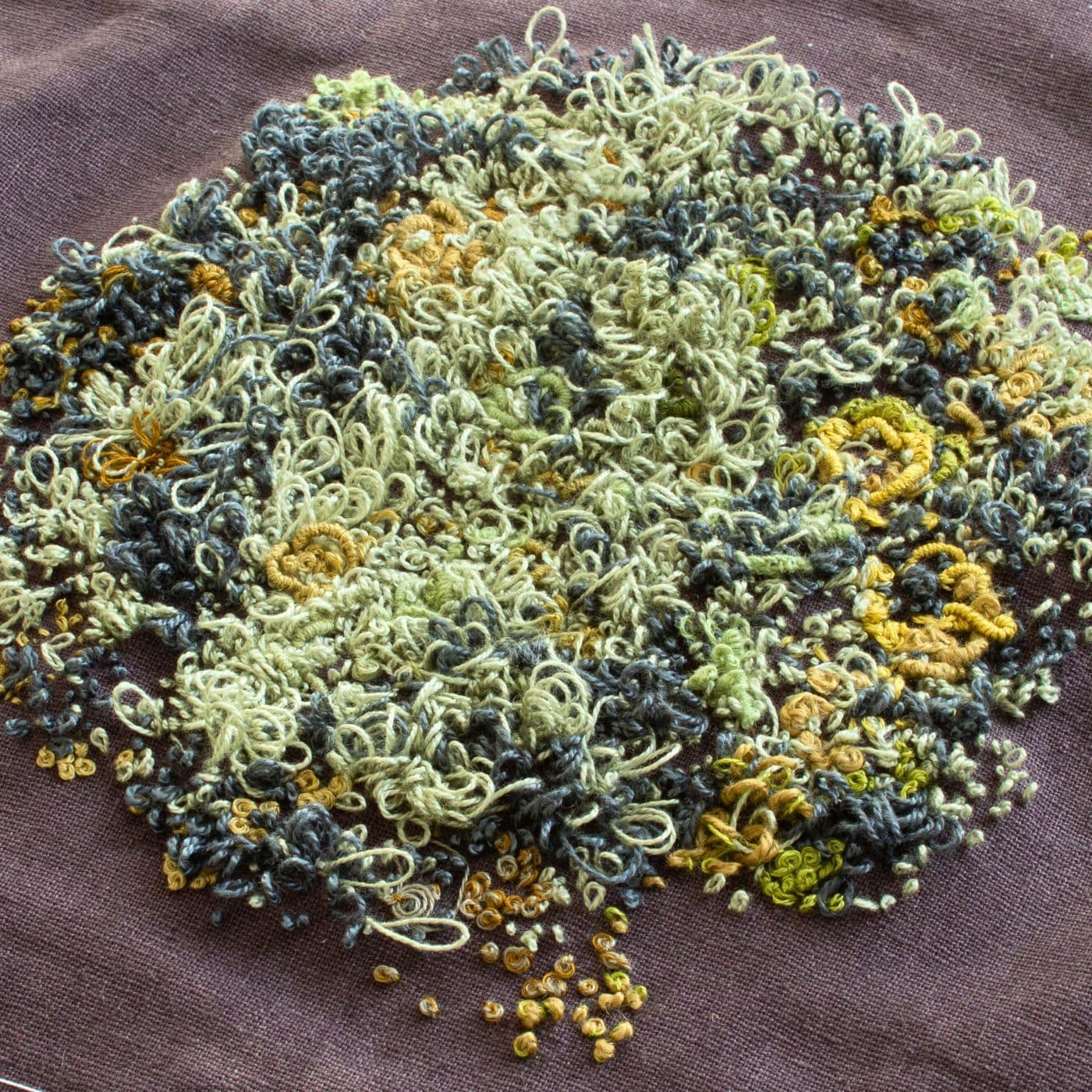
Blending art with a career
Heidi Ingram: I am largely self taught, with books and websites being my first port of call for learning new skills. When visiting the local library with my children, I’d sneak off to search the arts section and find books on embroidery and textile techniques.
I had completed a degree in Botany and a PhD in Plant Science, and I wasn’t up for taking on a full-time textiles course, so I decided to teach myself. Learning at my own pace was the perfect solution to maintain my work and family life balance.
When I started writing for TextileArtist in 2018, I discovered a huge variety of exciting contemporary works being made by textile artists around the world. And in 2019, I worked my way through Sue Stone’s ‘Exploring Texture and Pattern’ online course.
I spent more time experimenting, sampling and sketching out ideas. I also helped produce stitched samples and edited the course materials for Sue’s ‘Stitch Your Story’ online course, which introduced me to mixed media and playing with composition.
These courses, along with the Stitch Club workshops, gave me a regular injection of new skills and ideas to explore in my own work.
Heidi Ingram, Textile artist
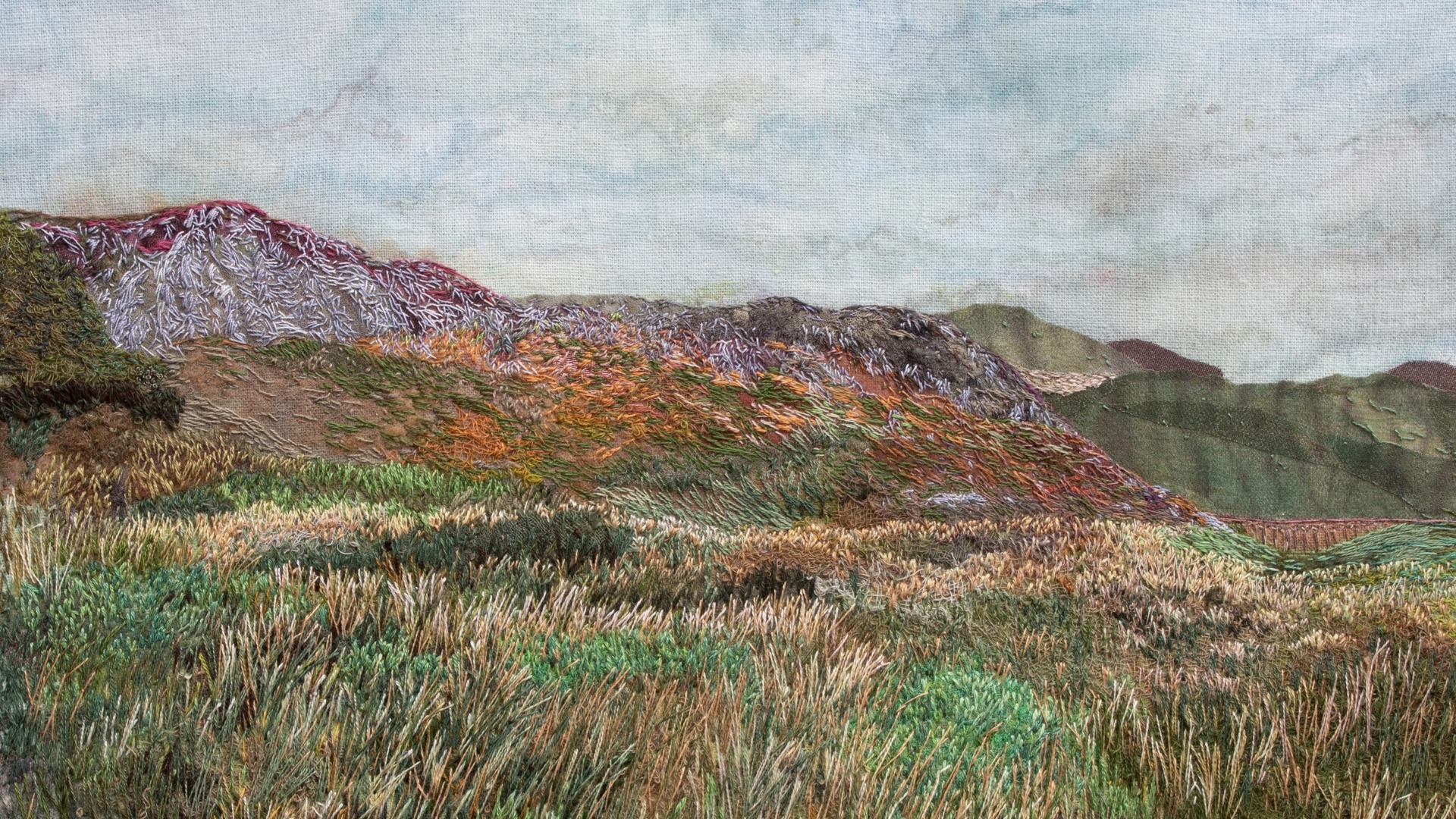
For the love of texture
I adore the intimate and tactile nature of handmade textile work, especially its attractive textures. For me, a successful textile work is one that makes me want to reach out and touch it (even if I can’t).
My work is slow and has a meditative exploration of colour and texture. It’s my way of quietly expressing the world around me.
I try to be mindful and enjoy the process rather than rushing toward the outcome.
Heidi Ingram, Textile artist
I love to create highly textured stitched landscapes based on locations that provoke an emotional response – places that trigger strong memories, or locations that made me stop in my tracks. It can be an expansive view that has meaning to me or a detail found on a local walk.
I’m also a keen gardener and plant lover, so just as in my garden, I enjoy building up layers and combinations and creating different microclimates in my art. As a result, my work is often quite abstract, using vivid colours to express a powerful response to a place.
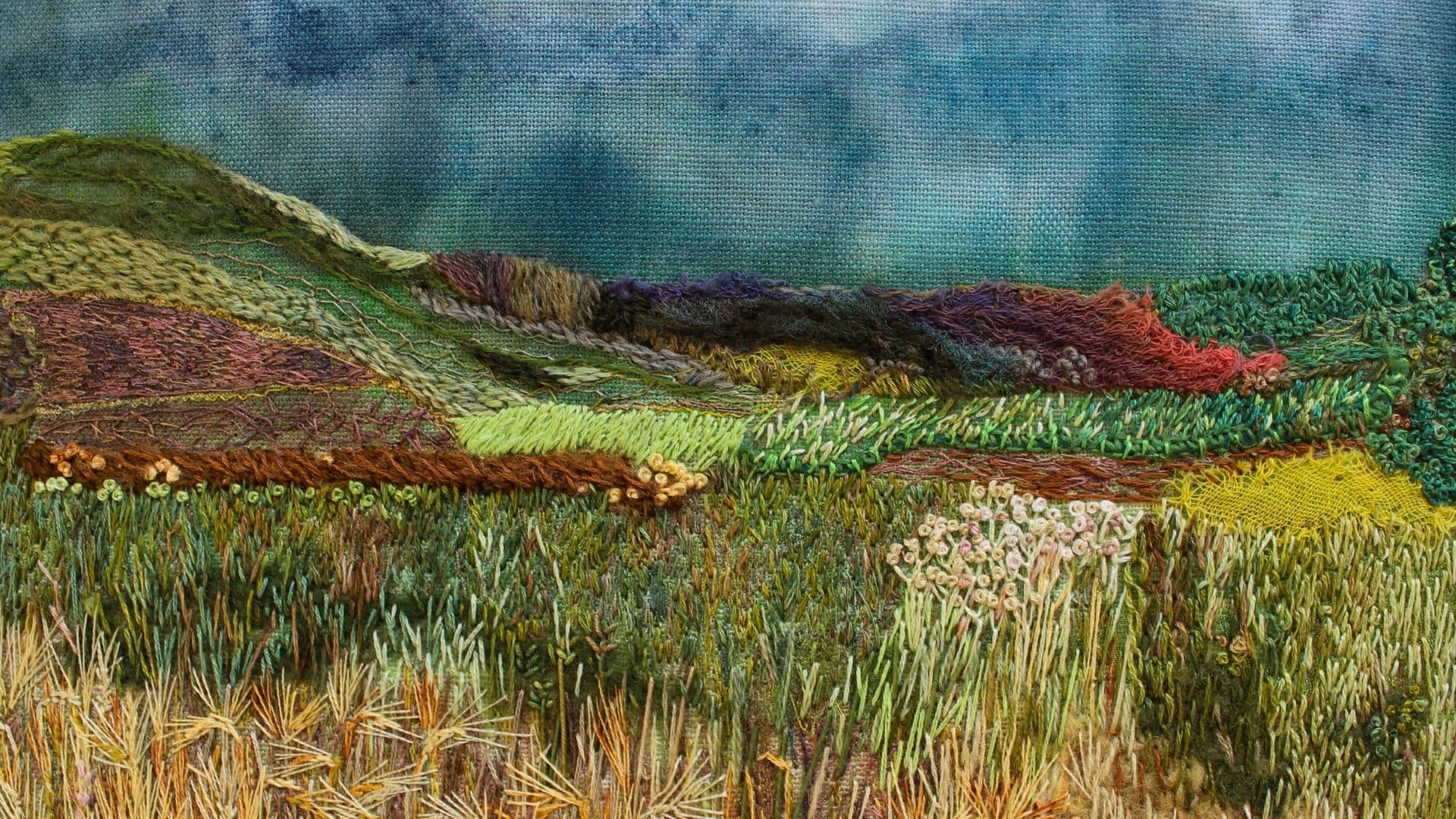
Layer by layer
I take lots of photographs when I am out and about, which I use for research and reference. There’s a great quality of light here in East Lothian with lots of wide-open sky. The colours of nature appear vibrant and strong.
I always do some research, like sketching out shapes or making notes or mind maps. Sketches can be important when working on landscapes as a way to figure out the overall balance of the composition. It’s all about the layers, textures and interactions of colour and shape.
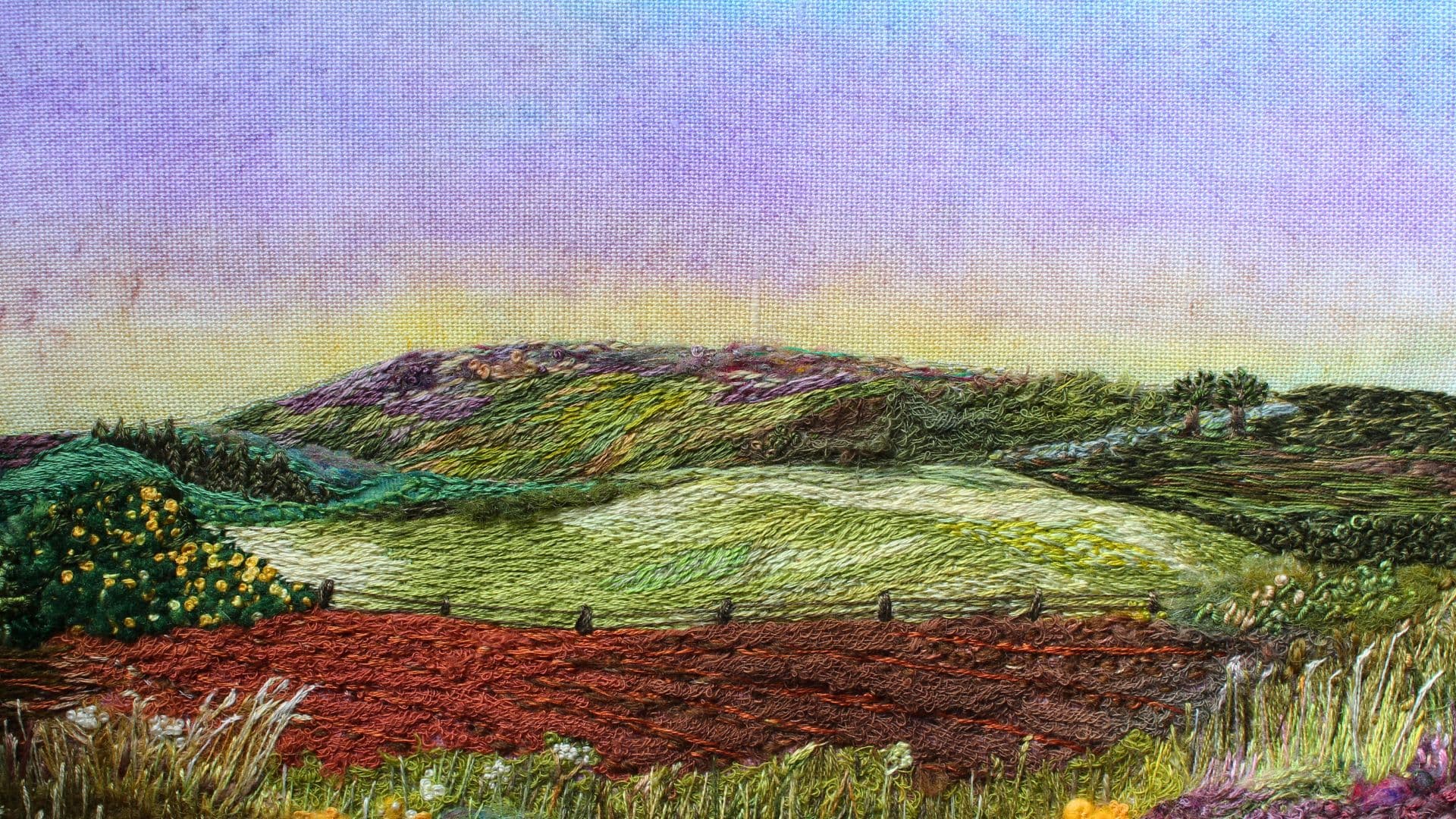
Background colour
I embrace the unpredictable results of painting directly onto my background fabric. Silk paints or dye-based watercolours flow through the fabric. Sometimes, I’ll sprinkle salt onto the wet areas. This attracts the paint and adds variation to the intensity of colour.
Acrylic paint is good for making stronger marks, but it can make the material harder to stitch through, so I mix it with fabric medium. I also use Derwent Inktense pencils to add colour details.
In terms of fabric, I tend to use what I already have at home, whether it’s materials bought or gifted over the years, or recycled shirts and bed linen made of natural fabrics. In some cases I’ve pieced sections of linen together to make a canvas big enough to fit over a frame.
Scraps of fabric for collaging come from the small collection of textiles I’ve gathered over the years. If I’m looking for a specific colour or pattern, I’ll often paint or print on fabric to achieve a bespoke and unique result.
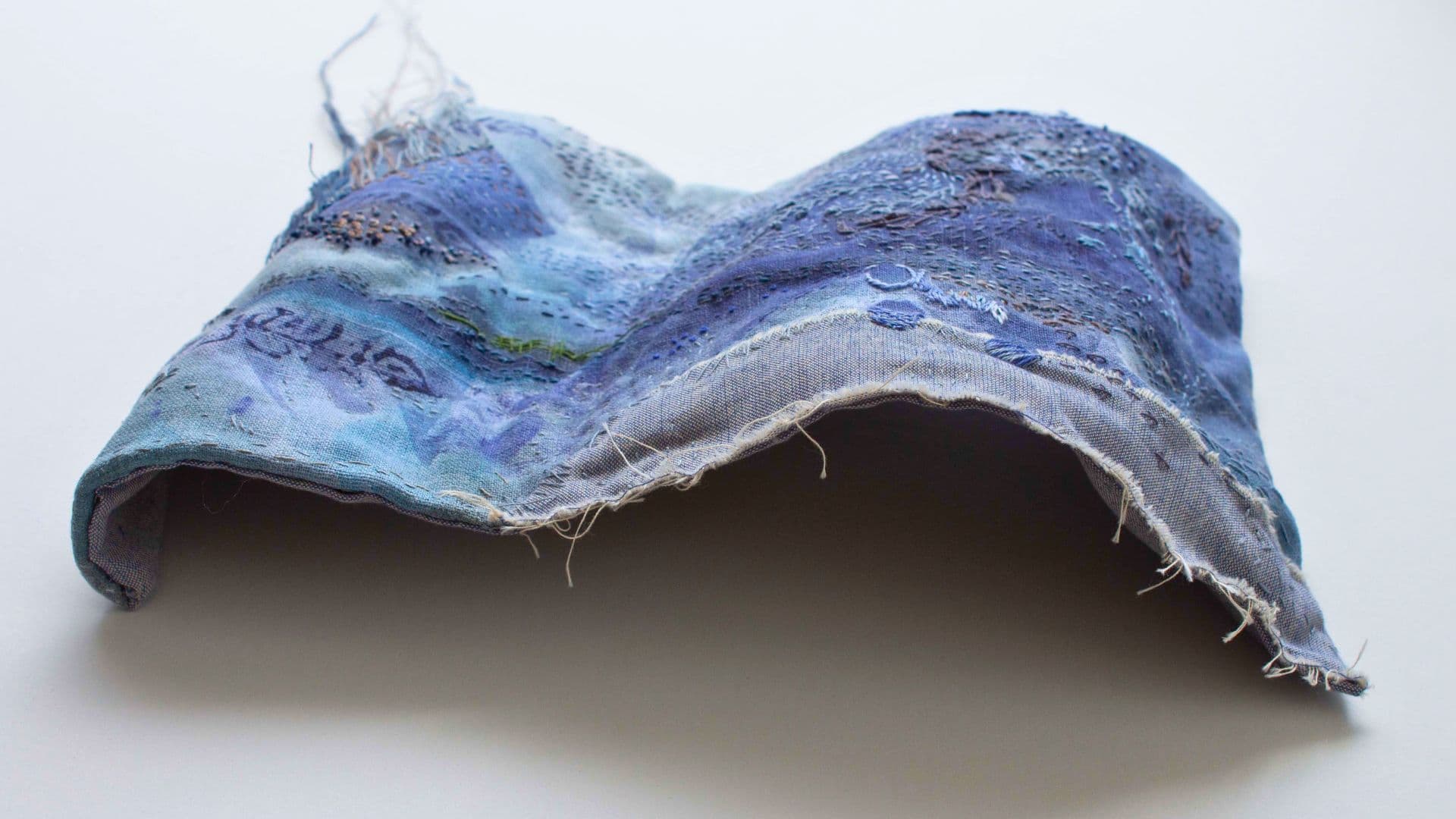
Let the stitching begin
My stitching adds a top layer detail and binds everything together. I prefer to use stranded embroidery threads because of their versatility. I can select a thickness of thread to give the quality of line I am seeking or mix threads of different colours.
If I want a really fine line, I use sewing machine thread. For thicker lines, I choose linen thread, or crewel wool for a softer line.
I use a range of stitches, including back stitch and stem stitch, with French knots, bullion knots and fly stitch dotted in, or drizzle stitches, which stand upright.
I’ve done some experimental work, adding movement through wiring and shaping.
My abstract piece, Undersea, evolved through mark making and intuitive stitch. Surface stitches rise off the fabric, becoming mysterious algal shapes. Wiring holds the piece in a wave form. There is a glimpse of a horizon, and land masses emerge from the depths of the ocean. The undulations and crinkles of the fabric add to the movement, as does the wave structure.
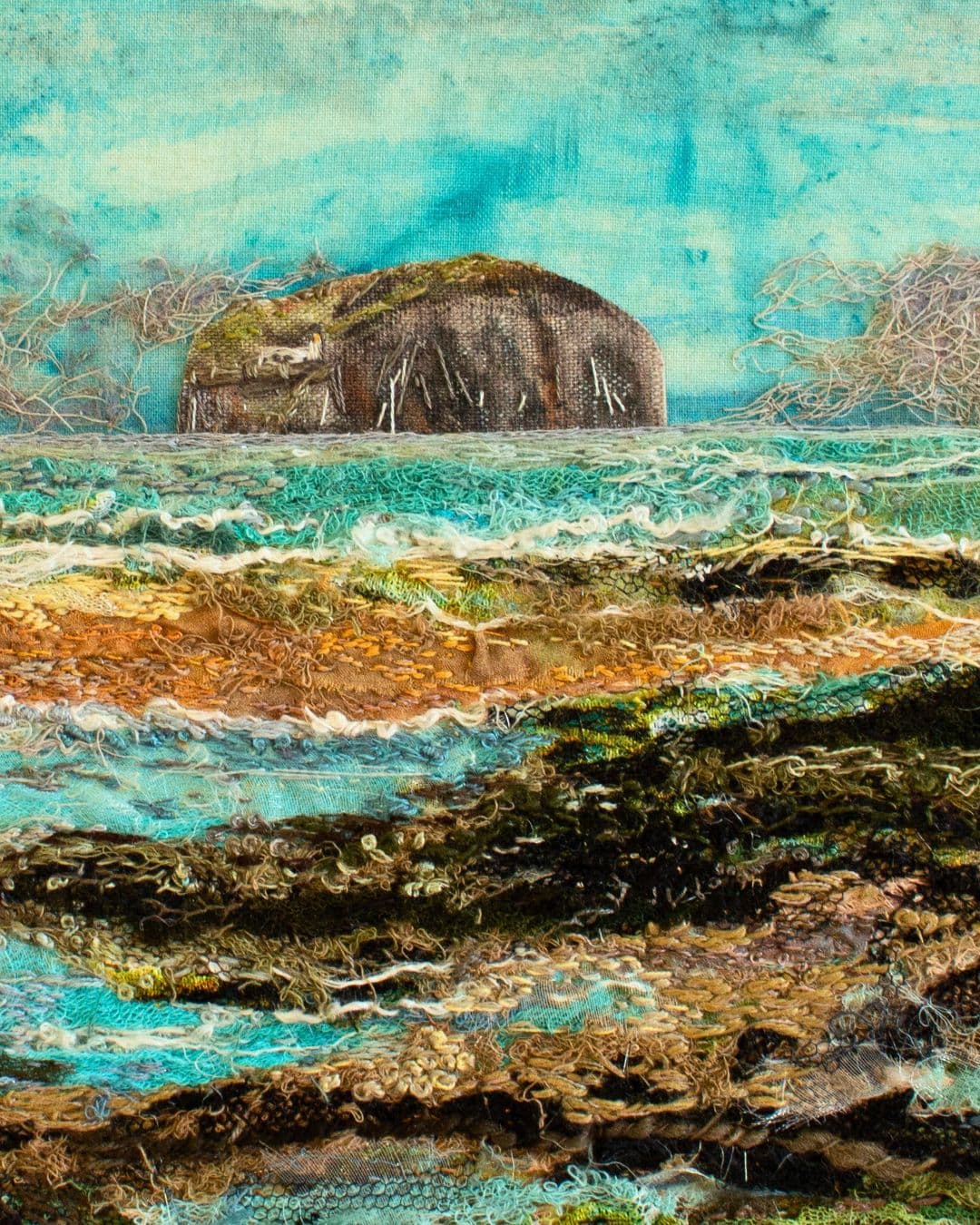
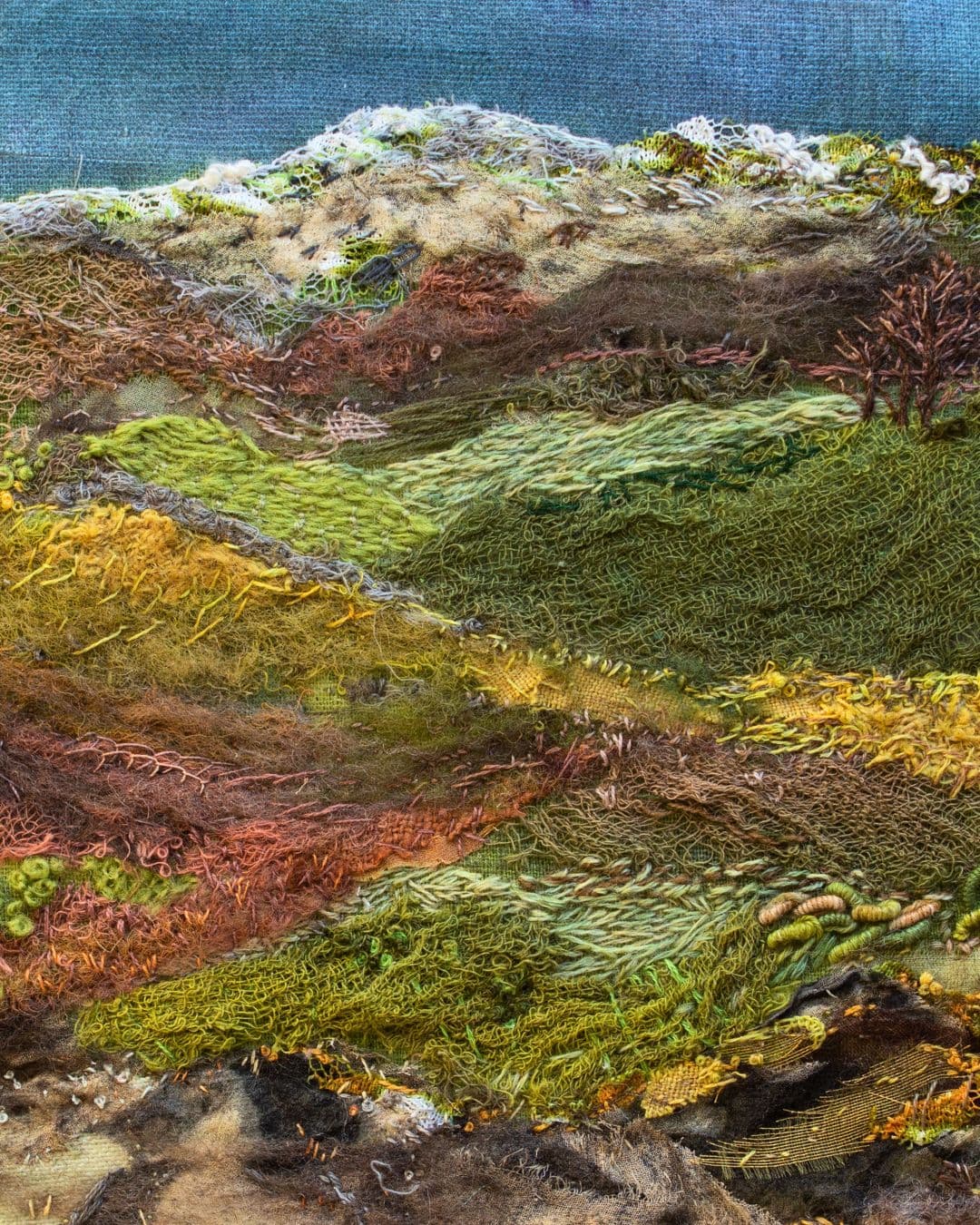
Stitching for peace of mind
Embroidery helped to keep me going during a particularly tough few years when I was suffering from health issues, depression and insomnia. It continues to give me a sense of balance and always lifts my mood, so I try to sew regularly, even if just for a short time.
Part of the joy of embroidery is not rushing. I want to focus on the process and not just the results. It can be a battle to give myself permission to switch off from other tasks, but it’s always worth the effort!
I feel totally immersed when I’m stitching, and zoned out of everything else that is going on around me.
Heidi Ingram, Textile artist
When pieces are not quite working out, I pile them on top of a chest of drawers to let them brew and be picked up later. I embrace this as part of my process, as it generates new directions. The key is to go back and check on them in the future. Often, new ideas come to mind, and I can finish the work with fresh eyes.
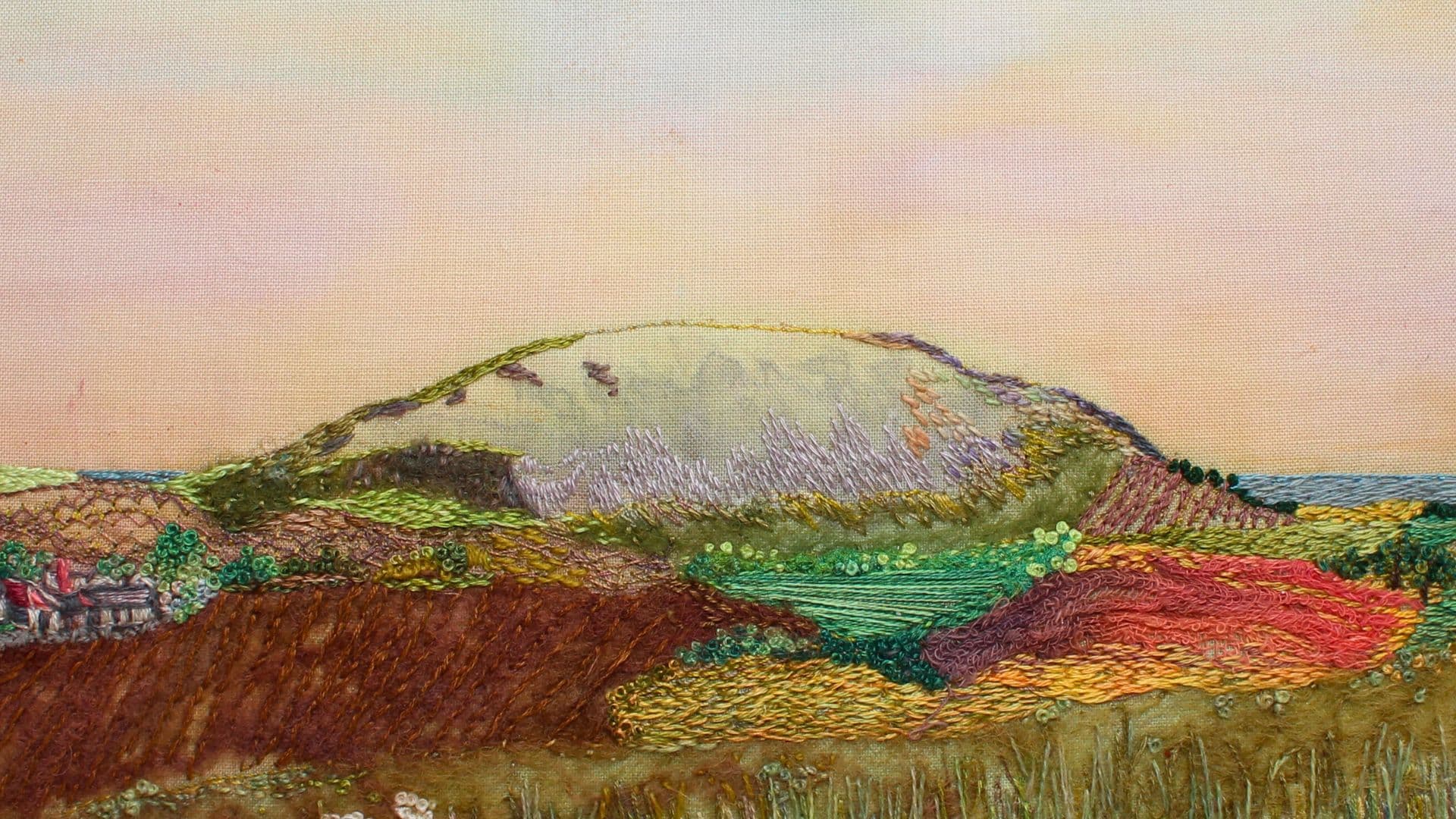
Mixing work with my passion for art
I joined the TextileArtist team as a writer in 2018. In 2020, my responsibilities grew to include producing Stitch Club workshop materials. I work closely with Charlotte, our content manager, and Luke, our video editor.
I’m thrilled to be able to use my technical editing skills alongside my knowledge of textile techniques, in order to produce clear, accurate and high-quality Stitch Club materials to aid members’ explorations of textile art. I produce the written materials with consideration to the maker’s perspective, making sure that the workbooks and the edited videos are clear and easy to follow.
Many members seek to combine ideas and techniques across the workshops, so I want to make sure that the workbooks provide a useful resource to return to for future projects.
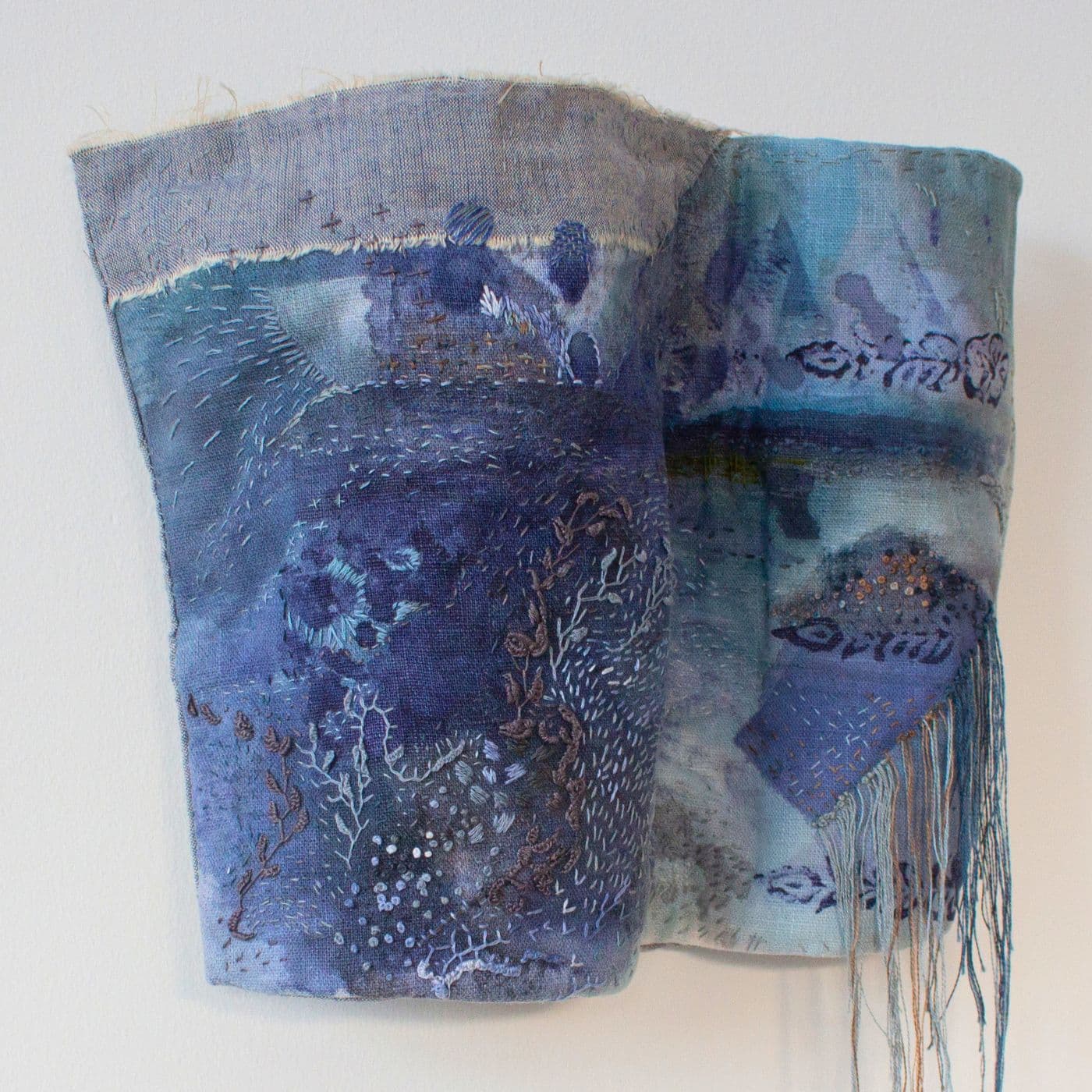
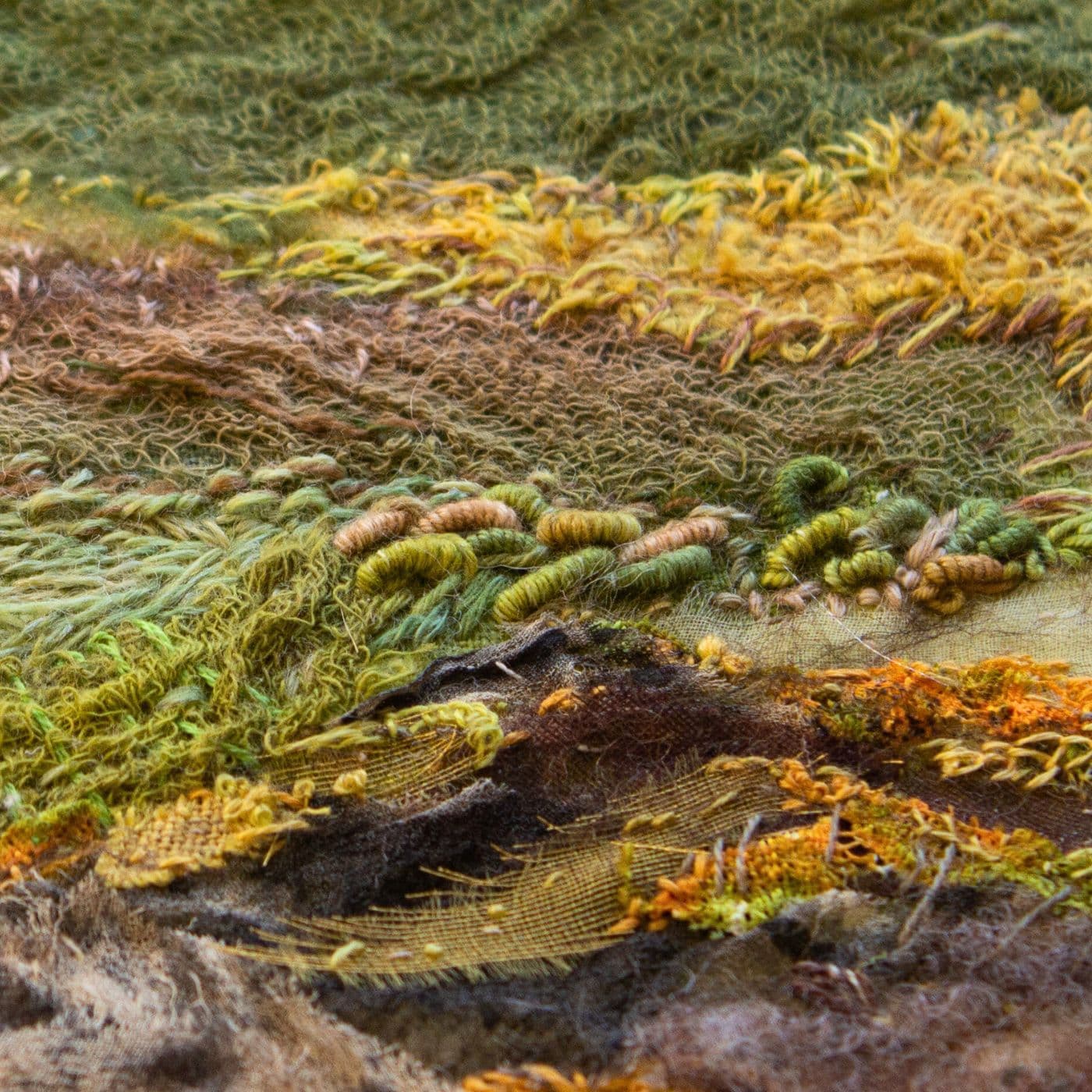
Playing along with Stitch Club
Stitch Club also provides me with an opportunity for the continual development of my skills. I’m still inspired and learn new processes by working on their production and by taking part in many of them, too.
As the curator for Stitch Club, I’m also always on the lookout for exciting new tutors. I often check into the Stitch Club members’ area to see the work being produced. It’s a friendly online community, full of fabulous creations, and it’s always inspiring to see the variety of responses to each workshop and how members help and support each other.
I’m particularly drawn to workshops that include paint and stitch, including those by Monique Day-Wilde and Amarjeet Nandhra. I love the spontaneity and bold results you get with mixed media approaches, and these workshops have helped me become more open to experimentation.
I enjoyed Bridget Steele Jessop’s introduction to needle lace stitch and Dijanne Cevaal’s lino printing workshop. And Woo Jin Joo’s workshop featured a playful paper collage process (which was very useful from a design perspective) that resulted in the creation of a surreal and fun mythology-inspired appliqué piece.
I’ve even gained the confidence to tackle some portraits through Sue Stone and Joette Maue’s workshops, mostly as personal projects. I’m particularly fond of the piece I made of my daughter working on her school art portfolio during lockdown. That work is now framed and in pride of place in my work room.
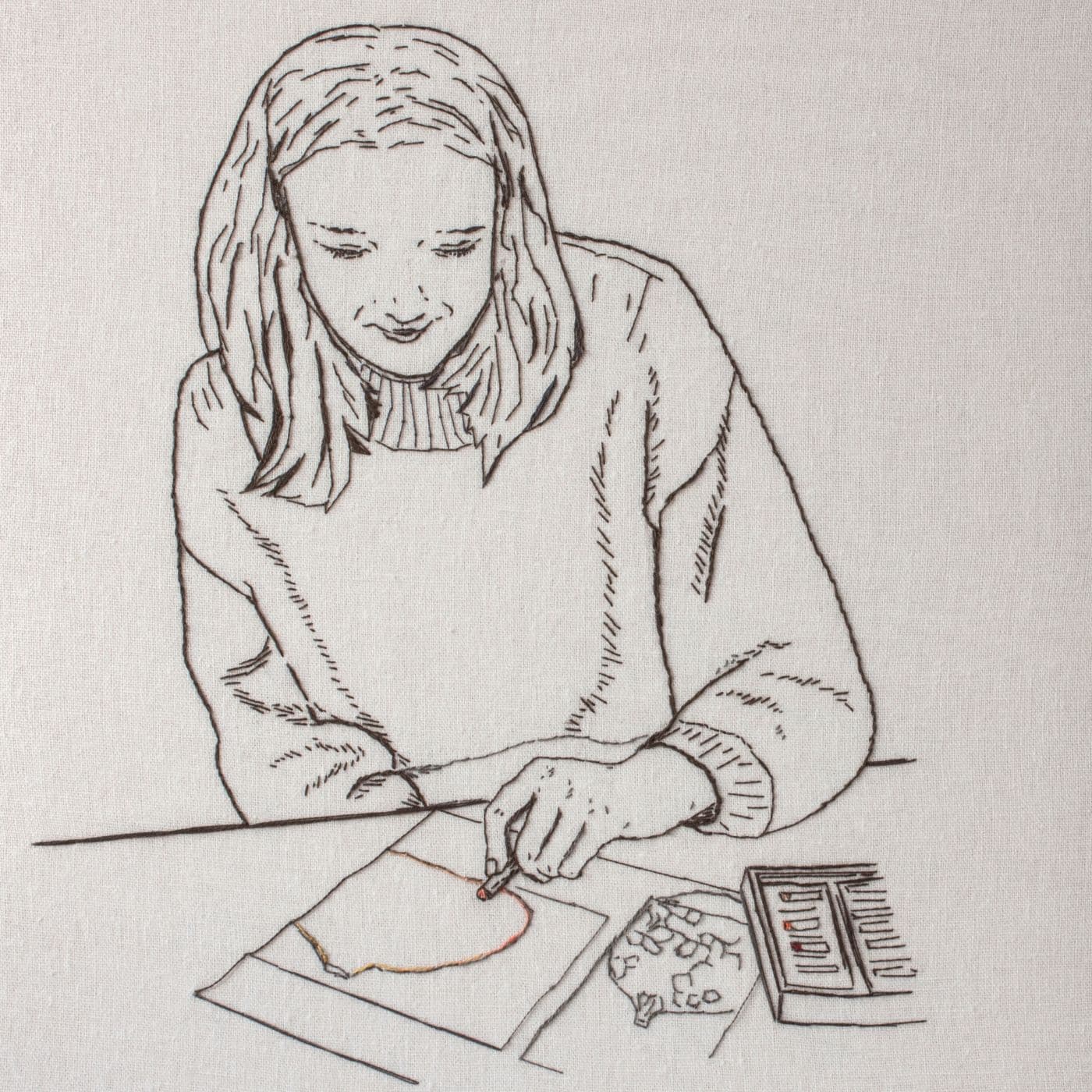
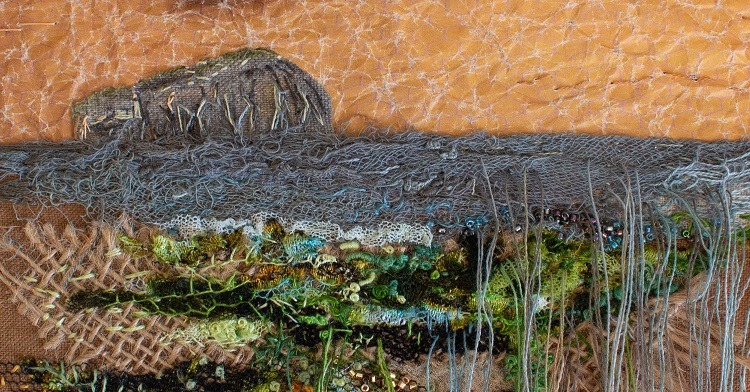

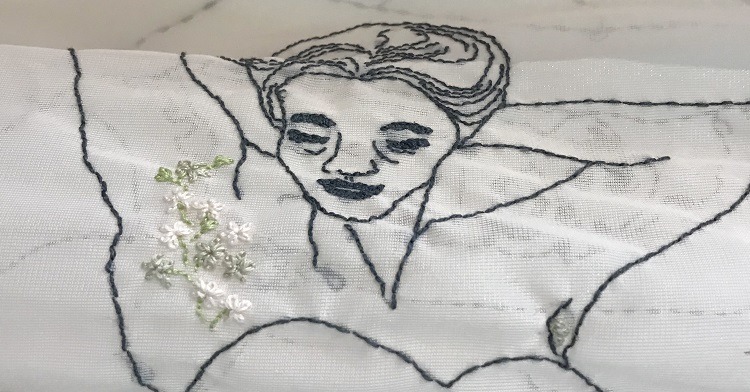
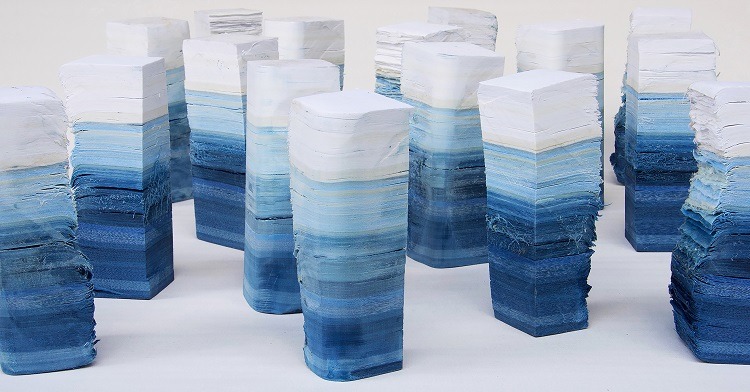
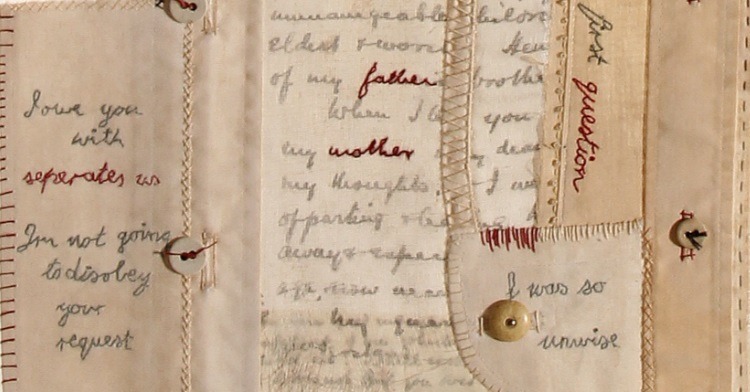
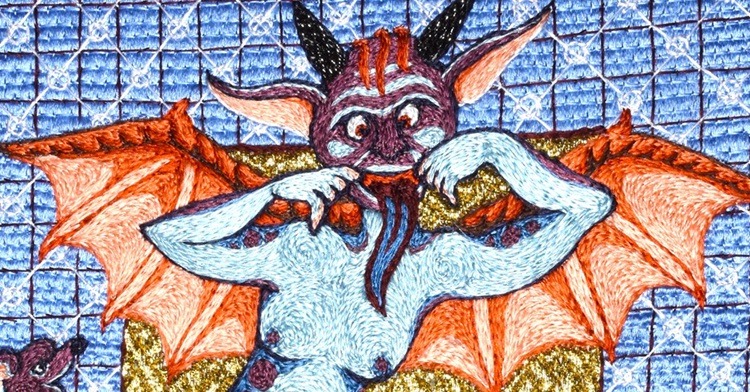
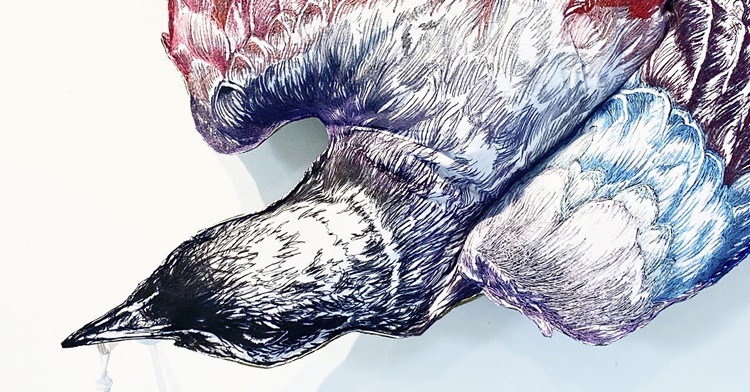
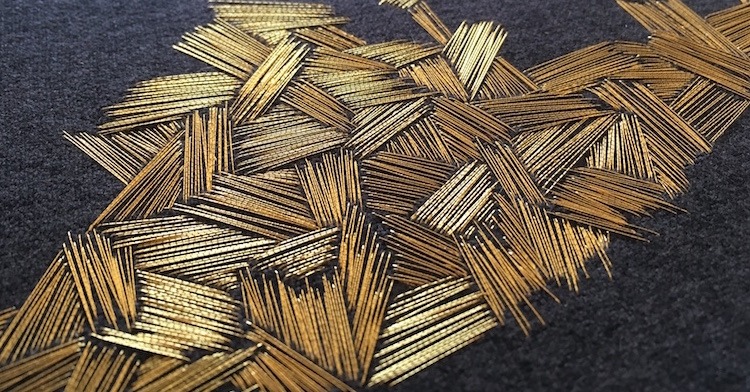
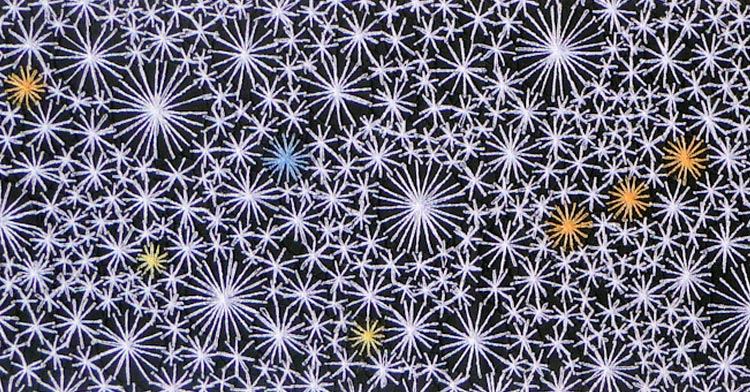
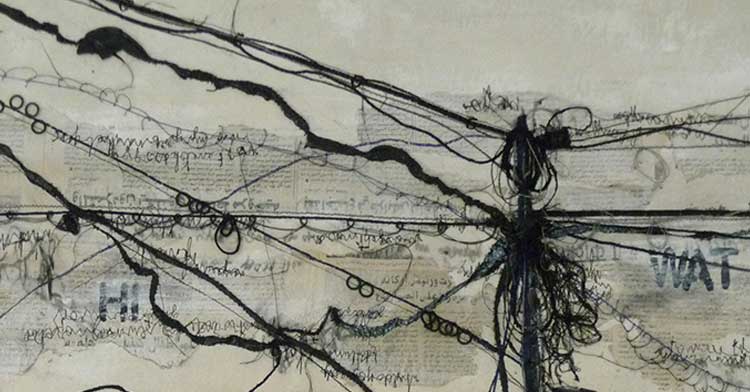

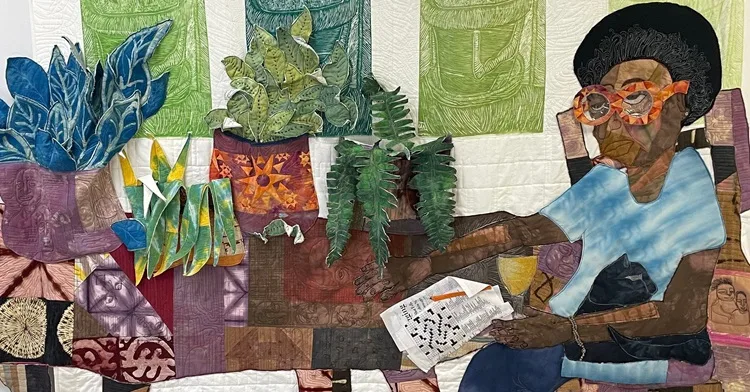
7 comments
Susan Dunlap
How can I acquire one of these pieces of art? I am utterly enchanted with them.
Ronald Bloom
It is an inspiring story you tell about Ms. Ingrams’ evolution as an artist. Her work shows the possibility that most folks can include art making in their lives without the structure of art classes or instructors. Having followed this road myself as a a tapestry artist ( inspired by early Shiela Hicks work,) the joy of creating my own path and work has enriched my life mightily!
E K
Inspiring and alluring. I love the subject matter, the textures, and colors and how they capture an awestruck sense of the beauty in nature. I love your work! When I saw your work, I just had to compliment your skill with composition, color, textures and overall impact your experiences in nature made on you. Just gorgeous.
The sculptural piece is also extraordinary. Creating a wave sculpture in an undersea subject in needlework is brilliant.
Jane
It’s lovely to see your work here Heidi and it is truly fine and beautiful. I don’t know how you fit it all in with your textileartist.org work too but your words and your work certainly are encouraging and I endeavour to find that time myself, so thank you. Great writing by you and Mary too!
Kim Soskin
What a wonderful, informative and inspiring article. There is so much in this! Your artwork is beautiful. Thanks so much for this.
Saima
What an interesting article. I love your use of photography and exploring the natural environment for inspiration. I can tell that you really look at the world before translating it through stitch. Wonderful colours and textures!
Jana
These are lovely landscapes! The variety of stitches used to create specific textures and depth are full of thoughtfulness as well as skill. I’m so pleased to see the work of someone whose articles I’ve read here. Thank you so much Heidi for sharing your work … sharing with us the peace of the natural world captured in cloth and thread. These beautiful scenes have set me up for a peaceful day!